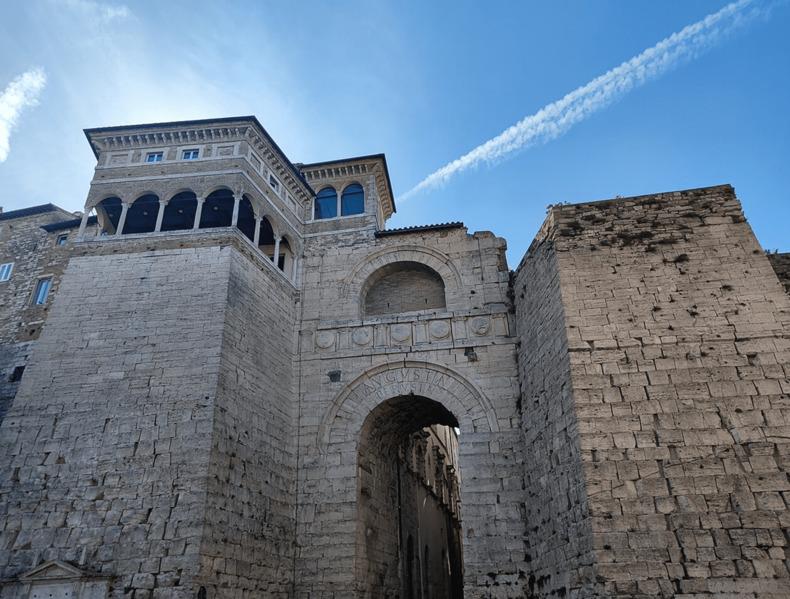By Federico Donti
The success of the article presented in the last issue and the curiosity aroused by the news that a committee made up of 15 important associations of the city has been born in the city of Perugia – to bring to the attention of the whole world that Etruscan Perugia should be considered a World Heritage Site – leads me to go into the specifics to give answers to the questions received by the editorial staff. The tool that I think is the most effective is that of the interview because if the interviewer manages to ask the questions that our audience asks, you can put the audience in tune with the interviewee and it will be like talking live. I decided to interview the engineer Luciano Vagni because I believe he is part of the soul of Etruscan Perugia, the one who with the excavations under the cathedral brought it to light and who organized the multimedia museum in the monumental complex of Sant’Anna with which he is teaching school children the Etruscan discipline.
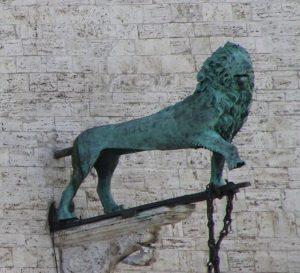
I appreciate his deep knowledge of Etruscan culture and his passion for study and I consider them a precious resource for the city of Perugia, regardless of the theories he expresses and that he is carrying out, in which I intend to delve into in the next interviews to clarify to myself and above all to the public important and unpublished aspects that each of us would like to know. We met again at the Rasna museum where our conversation resumed. The first question I would like to ask is why we have decided now to present the candidacy of Etruscan Perugia as a World Heritage Site and not, for example, in the years ago, at the time of the Etruscologist Professor Torelli or even further back at those of Professor Pallottino, one of the greatest pioneers of the study of the Etruscan civilization.
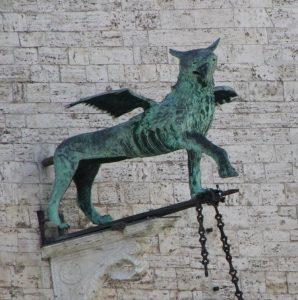 The engineer calmly replied that each fruit must have its own season and time to ripen; the excavations carried out under the cathedral of Perugia that lasted from 1976 to 2009 were the new element that brought Perugia back to the forefront of Etruscan culture, but after a period of success that culminated with the conference held at the Sala dei Notari on 14-15-16 June 2013, the cultural world did not give a significant follow-up; The conference was based on the focal point of Etruscan culture, the principle of correspondence between the sky and the microcosms of the earth, including the territories and the city, which the Etruscans built using the sky as a model.
The engineer calmly replied that each fruit must have its own season and time to ripen; the excavations carried out under the cathedral of Perugia that lasted from 1976 to 2009 were the new element that brought Perugia back to the forefront of Etruscan culture, but after a period of success that culminated with the conference held at the Sala dei Notari on 14-15-16 June 2013, the cultural world did not give a significant follow-up; The conference was based on the focal point of Etruscan culture, the principle of correspondence between the sky and the microcosms of the earth, including the territories and the city, which the Etruscans built using the sky as a model.
The world of culture was not ready to accept a principle so different from our way of thinking and at least to accept that an engineer would leave his field to invade, with such new hypotheses, the world of archaeology. In 2014, the Archaeological Superintendence of Umbria reacted to his book “Under the Cathedral”, which was very successful and published by Edicit, with the publication of a text entitled “Perugia- the ancient city under the cathedral of San Lorenzo – results of the excavations”. In the presentation of the book, the Superintendent for Archaeological Heritage, dr. Mario Pagano, limited himself, referring to the book “Under the Cathedral” published 5 years earlier in these terms: “that it is a work that formulates interesting as well as daring and questionable hypotheses”. Without deigning to list at least one of the questionable hypotheses to which he referred, thus avoiding igniting a debate that he was evidently not willing to support, even though it would have been his duty to do so.
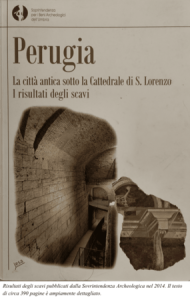 The engineer argues that there would instead be much to say about the book published by the Superintendence, in which the considerable inconsistencies present have caused it to be withdrawn from the market; adds that we are always in time to ignite the debate as long as there is someone willing to support it, given the vicissitudes that have overwhelmed Dr. Mario Pagano, arrested on July 28, 2022. The most striking inconsistencies that can be noted in the book are, on the one hand, the assertion that the finds that emerged from the excavations attest to the frequentation in the Villanovan era, i.e. the eighth and ninth centuries B.C., on the other hand that the project of monumentalization of the public area of the city began in the middle of the third century B.C., giving the impression that before there were no temples, when the temple with its antefixes is described in the work.
The engineer argues that there would instead be much to say about the book published by the Superintendence, in which the considerable inconsistencies present have caused it to be withdrawn from the market; adds that we are always in time to ignite the debate as long as there is someone willing to support it, given the vicissitudes that have overwhelmed Dr. Mario Pagano, arrested on July 28, 2022. The most striking inconsistencies that can be noted in the book are, on the one hand, the assertion that the finds that emerged from the excavations attest to the frequentation in the Villanovan era, i.e. the eighth and ninth centuries B.C., on the other hand that the project of monumentalization of the public area of the city began in the middle of the third century B.C., giving the impression that before there were no temples, when the temple with its antefixes is described in the work.
Another aspect that seems insignificant is the assertion on the one hand that the inscription “CA” widespread in the walls of the acropolis are quarry symbols, that is, they attest to which quarry originates, and on the other hand that they were relevant to the destination of the works; this aspect is very important because the Etruscans with the inscription “CA” would have transmitted us the news that the temple and the walls of the acropolis were dedicated to the deity “CA”, and going to look for it in the liver of Piacenza, where all the Etruscan divinities are reported, it can be none other than Culsan Alpan which is located northeast of the liver as Perugia is northeast of Etruria. This is an example of the principle of correspondence between the city and the sky.
The book is characterized by a great confusion of exposition and a lack of clarity, as in calling the walls of the acropolis substruction, i.e. supporting the ground, walls and in talking about Etruscan Roman urbanism, two totally different conceptions: the first is circular, like the sky represented in the liver of Piacenza, where the pomerium of the walls corresponds to the celestial zodiac, the second is orthogonal, and the Romans tried to apply it to Perugia with forced and clumsy urban interventions. The city did not lend itself well to an orthogonal urbanism that forced them to carry out an expansion both to the north and to the south in order to build the two gates, the current Etruscan Arch and the gate of San Vito (which was much wider than the current one), to access the city with their troops and be able to control it.
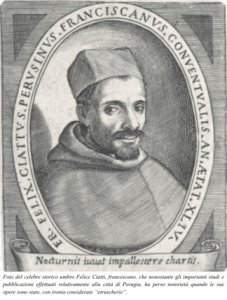 We thus found that the Superintendence was not willing to revise the erroneous interpretations of the past, especially those expressed by Dr. Banti to whom we mentioned in our previous meeting, which have taken away from the city of Perugia at least six centuries of history recovered from the findings of the excavations under the cathedral; There are six more to be found to reconnect us to the history of myths, and they are the most difficult to find because they refer to a period in which we will never find writings of confirmation because writing did not yet exist.
We thus found that the Superintendence was not willing to revise the erroneous interpretations of the past, especially those expressed by Dr. Banti to whom we mentioned in our previous meeting, which have taken away from the city of Perugia at least six centuries of history recovered from the findings of the excavations under the cathedral; There are six more to be found to reconnect us to the history of myths, and they are the most difficult to find because they refer to a period in which we will never find writings of confirmation because writing did not yet exist.
At this point I took the liberty of interrupting the engineer because a question spontaneously came to mind: “How do you think we are going to reconstruct the ancient Etruscan history, especially the more archaic one from the time of the Trojan War and the first half of the second millennium BC?”
Certainly not continuing to disturb the peace of the Etruscans, he answers, that is, by digging their tombs which, as has been found, are fairly recent testimonies, since the custom of burying the dead in monumental tombs developed with the birth of a class, that of the rich, which did not exist before; in the second millennium B.C. the Etruscans did not have private property because the land to be worked was assigned to them in use, as the planet earth is in use for humanity and for other living beings, giving part of the harvest to the king or to the lucumone on duty, to ensure compliance with the rules.
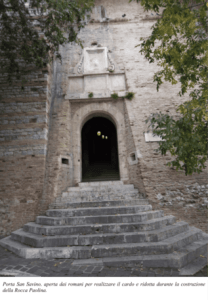 A precise organization ensured that there was work for everyone and considerable food supplies; suffice it to say that Perugia in the “Bellum perusinum”, in 4. B.C. had to host Lucius’ legions for more than a year, i.e. about 30,000 soldiers without being able to stock up on provisions, because the city was hermetically besieged by Octavian Augustus; This means that at least 30,000 more were added to the city’s 10,000 inhabitants, and that the city had food supplies at least four times its needs. Returning to the cult of the dead, it spread in the Etruscan culture when the oligarchies of rich families were born who, with the beginning of private property and trade, learned to accumulate wealth, an activity facilitated by the birth and spread of money and the use of writing.
A precise organization ensured that there was work for everyone and considerable food supplies; suffice it to say that Perugia in the “Bellum perusinum”, in 4. B.C. had to host Lucius’ legions for more than a year, i.e. about 30,000 soldiers without being able to stock up on provisions, because the city was hermetically besieged by Octavian Augustus; This means that at least 30,000 more were added to the city’s 10,000 inhabitants, and that the city had food supplies at least four times its needs. Returning to the cult of the dead, it spread in the Etruscan culture when the oligarchies of rich families were born who, with the beginning of private property and trade, learned to accumulate wealth, an activity facilitated by the birth and spread of money and the use of writing.
The most ancient history is reconstructed first of all by putting together in a database the infinite material accumulated in museums and warehouses all over the world in order to be able to examine it in a comparative way, starting from the hypothesis that all the classifications carried out so far, and especially the hypotheses of dating, may be wrong because they are supported by false hypotheses, such as that of Dr. Banti mentioned above. The Etruscan culture flourished in the Bronze Age in which there was neither writing nor coinage, but it would be enough to chemically analyse all the bronze finds and put them in a database to be able to define the place of origin and the date of fusion of most of them.
Unfortunately, the provenance of many of them is not known but, nevertheless, a careful investigation can make it possible to date them and also to discover the movements to which that object was subjected. Science, in this case, can help a lot to reconstruct history, but you have to want it and know how to use it; we could begin to analyse the bronzes of the two symbols of Perugia, the griffin and the lion, to demonstrate the incompatibility of the two works: the griffin, which is a composite animal, with the head of a bird and the paws of a lion, similar to the chimera of Arezzo, even if it has been mutilated, is Etruscan, while the lion, with which it has been forcibly placed in pairs, is Etruscan, it is medieval.
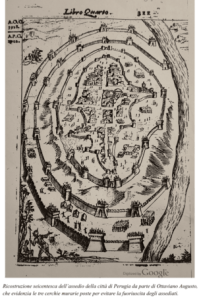 Again, for science, dispersed among so many streams of disciplines and specializations, it is premature to carry out research such as the one we have described above, even if it is theoretically possible. Bronze has a kind of DNA in its chemical composition, i.e. no two bronzes are the same, due to the significant number of metals present in ever-changing quantities, and this facilitates classification. There is also another method, the one followed by our association Catha, which by observing the skies of the past with the ‘Stellarium’ program has retraced the skies that the Etruscans observed, followed and copied, understanding a lot of their culture and their astronomical knowledge.
Again, for science, dispersed among so many streams of disciplines and specializations, it is premature to carry out research such as the one we have described above, even if it is theoretically possible. Bronze has a kind of DNA in its chemical composition, i.e. no two bronzes are the same, due to the significant number of metals present in ever-changing quantities, and this facilitates classification. There is also another method, the one followed by our association Catha, which by observing the skies of the past with the ‘Stellarium’ program has retraced the skies that the Etruscans observed, followed and copied, understanding a lot of their culture and their astronomical knowledge.
A child in the fifth grade of primary school during the lessons on the Etruscans intervened saying: “If they drew their cities by copying the sky and if the sky changes slightly from century to century, then the Etruscan cities are dated!” That’s right! The Etruscan cities are dated, but we need to know their urban planning, that is, their walls, gates and temples to understand their date. For Perugia, one of the last important cities of Etruria to be founded, this knowledge is now acquired and this is the main reason why Etruscan Perugia is considered the city of heaven, and proposed as a World Heritage Site.
At this point I decided to say goodbye to the engineer: “Thank you, we will certainly have other meetings to immerse ourselves more in this extraordinary Etruscan scenery and to dispel some doubts and uncertainties. You give us time to digest such new and complex topics. I know that every Friday, from eighteen to twenty, here at the museum there are courses in Etruscan discipline and I think I will take advantage of it. Thank you again.”
